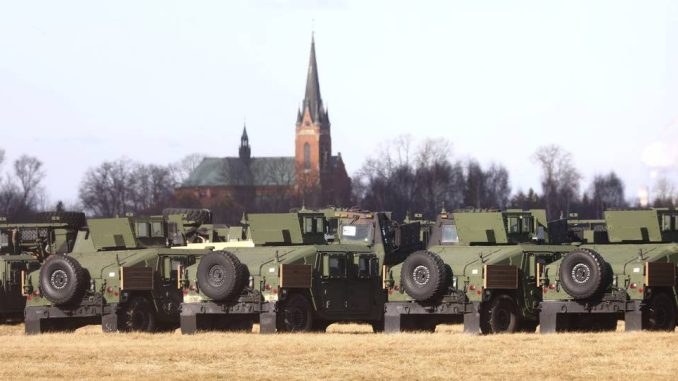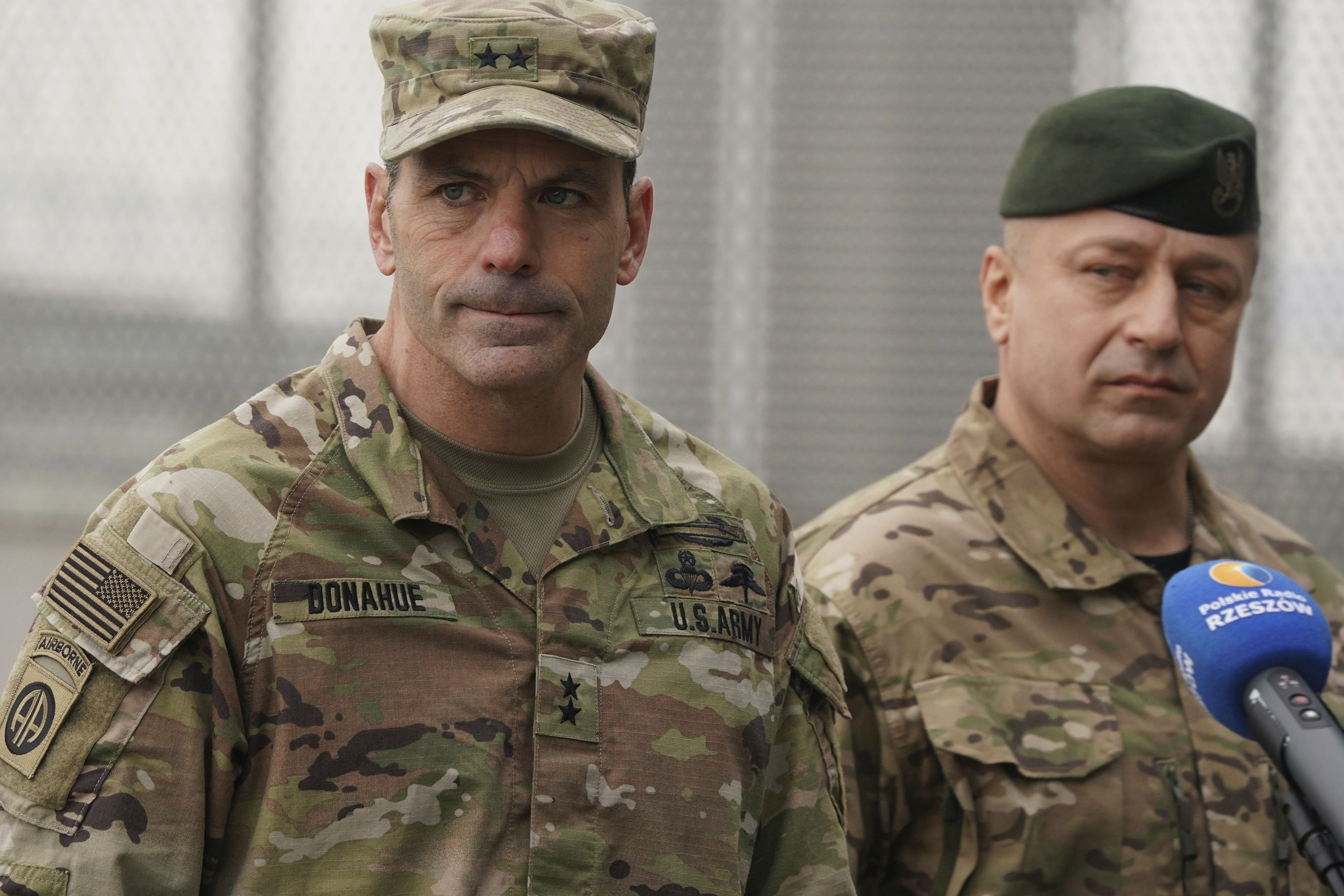

The 4,700 U.S. paratroopers dispatched to Poland amid the ongoing Ukraine crisis are building encampments and expected to train with Polish allies, while a small headquarters element has arrived in Germany and another 1,000 Stryker soldiers are setting up in Romania.
Meanwhile, an experimental U.S. Army reconnaissance jet — dubbed Artemis — spent Thursday cruising along a flight path that skirted Belarusian borders and the Russian exclave of Kaliningrad, according to flight data. U.S. Army helicopters have also made flights in Polish airspace, including to evacuate an American who had a medical condition in Kyiv.
However, the exact plan for paratroopers deployed to Europe from their home base of Fort Bragg, N.C., remains unsaid. Officials with the XVIII Airborne Corps declined Army Times’ requests to interview commanders on the ground, citing the tense situation and dynamic environment.
“Task Force Dragon Soldiers in Poland and Germany are building out temporary encampments and assembly areas in support of our mission to reassure our NATO Allies,” said XVIII Airborne Corps spokesman Col. Joe Buccino. “The NATO alliance is firm and our presence in Europe recognizes an abiding American commitment. We greatly look forward to beginning training with our Polish Allies in the coming days.”
In recent weeks, Defense Secretary Lloyd Austin ordered 4,700 members of the 82nd Airborne Division to deploy to Poland as a show of support to NATO allies. Another 300 soldiers from the XVIII Airborne Corps made their way to Germany, while 1,000 soldiers from the Germany-based 2nd Cavalry Regiment went to Romania.
Paratroopers in Poland are setting up at a military airport near Mielec, in the southeastern part of the country. None of those forces are poised to respond to a Russian incursion, the Pentagon has said, though the paratroopers could support American evacuees fleeing Ukraine into Poland.
The paratroopers are led on the ground by Maj. Gen. Christopher Donahue, who also commanded the Afghanistan evacuation out of Hamid Karzai International Airport in August.
The 101st Airborne Division, out of Fort Campbell, Kentucky, also sent several hundred troops to Europe this week to support the XVIII Airborne Corps-led Joint Task Force Dragon. The air assault troopers include logistics personnel and headquarters staff, said unit spokeswoman Lt. Col. Kari McEwen.
Adding to the combat power in Poland is a 1st Infantry Division armored brigade, which began a nine-month rotation to the country in August. The brigade has 3,800 troops, 80 Abrams tanks, 15 self-propelled howitzers and 130 Bradley fighting vehicles. Rotations like that have been routine since 2014, when Russia annexed Ukraine’s Crimea peninsula.
A contingent of 160 Florida National Guard soldiers deployed to Western Ukraine since November were ordered on Feb. 12 to leave the country amid an increasing concern of a Russian attack.
There are more than 150,000 Russian troops arrayed around Ukraine.
Austin recently visited Lithuania to reassure the three Baltic nations that the U.S. would stand by them in the event of an attack. Western officials have increasingly warned in recent days that Moscow could invade Ukraine at any time, although Russia has denied that it’s planning an invasion.
“I want everyone in Lithuania, Estonia and Latvia to know — and I want President Putin and the Kremlin to know — that the United States of America stands with our allies,” Austin said during a news conference in Vilnius, the Lithuanian capital on Saturday.
Austin stopped short of promising a permanent deployment of a rotating battalion to the Baltics, which Lithuanian leaders requested, according to The Associated Press.
Kyle Rempfer is an editor and reporter who has covered combat operations, criminal cases, foreign military assistance and training accidents.
Before entering journalism, Kyle served in U.S. Air Force Special Tactics and deployed in 2014 to Paktika Province, Afghanistan, and Baghdad, Iraq. Follow on Twitter @Kyle_Rempfer


Be the first to comment